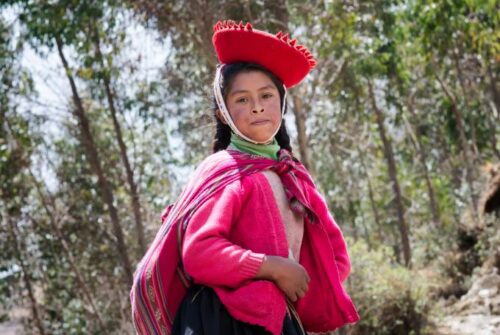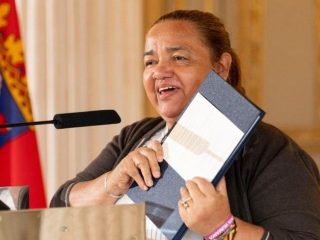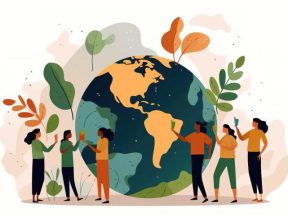How Climate Change Affects Girls and Young Women.
Drought, floods, abnormal heat waves. Today we are faced with a climate crisis that is unprecedented in human history, the consequences of which are there for all to see.
It is primarily the inhabitants of the poorest and most vulnerable countries and, more generally, those belonging to the most disadvantaged social groups, especially women, who pay the highest price for this situation. “Compared to men, women and girls are more likely to lose their lives due to extreme weather events. Furthermore, since climate change often leads to forced migration, loss of income and housing, this makes them more vulnerable to gender-based violence”, write researchers Betty Barkha and Katrina Lee-Koo in a paper recently published in The Conversation.
Children and young people also pay a particularly high price for this situation: “Climate change threatens their fundamental right to education, food, and recreation. Given the fact that younger people are less responsible for this situation than adults, climate change has been defined by the Human Rights Council as the gravest intergenerational injustice of our times”.

Climate change threatens the fundamental right to education, food, and recreation. (Photo: Unicef)
Floods, storms, and droughts amplify discrimination and gender inequalities, limiting or preventing girls, especially those living in the poorest countries and in the most vulnerable communities, from attending school. According to a study conducted by the Malala Foundation, in 2021 alone, due to the impacts of climate change, at least 4 million girls in middle and low-income countries were unable to complete their studies. And if there is no turnaround, climate change will be one of the factors that will force at least 12.5 million girls to leave school by 2025.The concrete impact of this situation is dramatic and, in various areas of the world, is already clearly evident. In the two-year period 2010-2011, the United Nations recorded an increase in early marriages in Ethiopia linked to the very severe drought that hit some areas of the country: in order to survive, the poorest families in rural areas gave their daughters in exchange for the payment of a dowry. Between 2018 and 2019 in Somalia, following migration from rural areas to the city due to floods, droughts and conflicts, student enrolment rates dropped from 45% to 29%.

In an increasingly warmer world, it is also more difficult to get supplies of water. (Photo: Unicef/Noorani
In an increasingly warmer world, it is also more difficult to get supplies of water: in many African countries, this task traditionally falls on the shoulders of women and girls, who are forced to undertake longer and longer journeys. In Botswana, 70% of the students who interrupted their studies during a period of drought were female. The lack of water in schools also prevents teenage girls from using the bathroom on menstruation days: not being able to take care of their hygiene properly, they often decide to stay at home, losing precious school days.
Working conditions are also exacerbated by global warming. Esmeralda, 15, lives in a rural area of Peru where the consequences of climate change are already evident. Hers is a peasant family and she is a delegate of the Movimiento Nacional de Niños, Niñas y Adolescentes Trabajadores Organizados del Perú: “We are no longer able to produce as in the past. Due to the consequences of climate change, women and girls have to work harder to support their families”. Esmeralda then explains how the scarcity of water has forced women and girls to go deeper and deeper into the Amazon jungle to find new sources, with the risk of being attacked and suffering violence and rape by men engaged in mining or in the illegal felling of trees.

Photo 123rf
But what do teenagers and young women think of this situation? How aware and informed are they of climate change and its consequences? In the first months of 2022, UNICEF and the World Association of Girl Guides and Girl Scouts carried out a survey that involved more than 33 thousand girls aged 10 to 25 in 90 countries on all continents.
The results indicate that 3 in 10 (28%) have no clear idea as to what climate change is and 1 in 10 (9%) have never heard of it. On the other hand, the topic excites the majority of respondents: 44% know what climate change is and 19% “could talk about it for hours”.
However, the picture changes slightly if you look more closely at some contexts: in Europe, the percentage of girls and young women who claim to have an excellent knowledge of the subject stands at 28%. In the countries of North Africa and the Middle East, there are many more (17% compared to 9%) who have never heard of climate change.

Taking concrete actions to protect the environment. Unicef/Dejongh
More than half of the girls and young women who participated in the survey (56%) said they were unaware of the disproportionate impact of climate change on the lives of girls and young women. Upon learning, nearly 8 in 10 respondents (79%) believe girls have the power to mitigate the problem.Half of the girls aged 10-17 who participated in the survey think that climate change is not taken as seriously as Covid, a percentage that rises to 63% for women between 18 and 25 years old. Most girls and young women (80%) say they have already done something in favour of the environment, such as participating in awareness campaigns, educating parents and peers, or taking concrete actions to protect it. However, this commitment is not recognized by the institutions: 6 out of 10 girls say that their governments have never consulted youth movements when it came to enacting policies to combat climate change. (Open Photo: Unicef/ Souleiman)
I.Sesana, R.Panuzzo, P.Ferrera
Terre des Hommes



